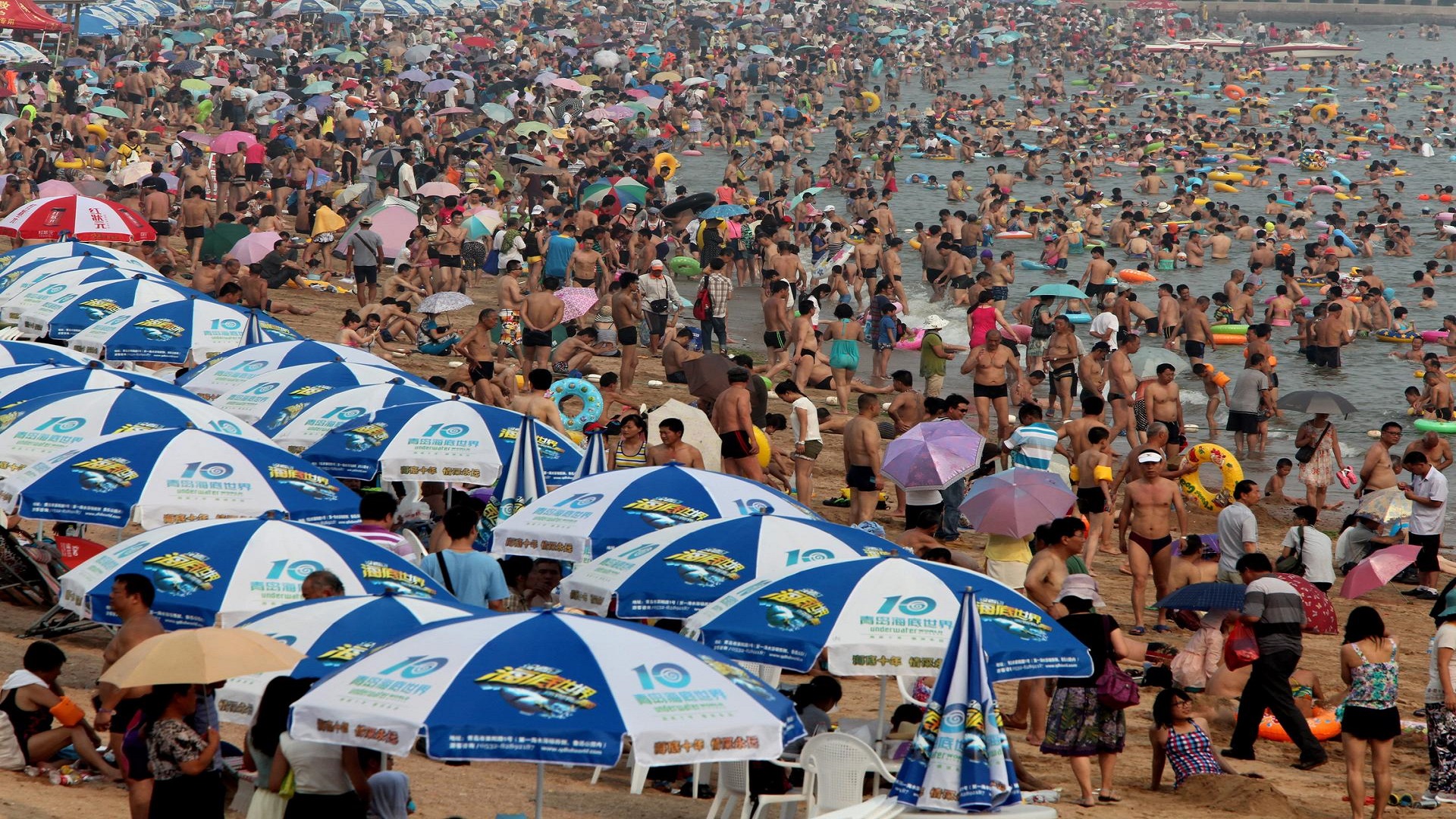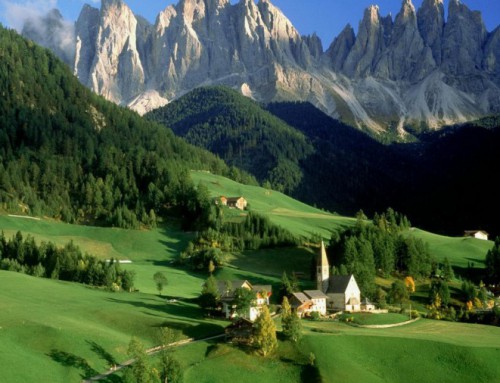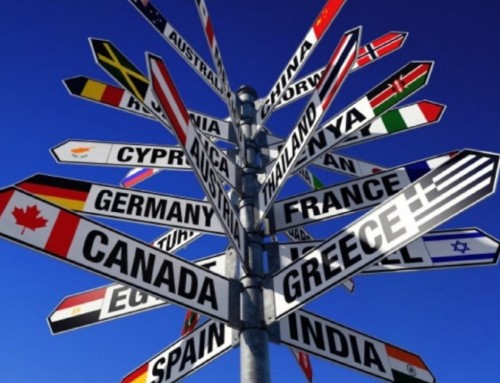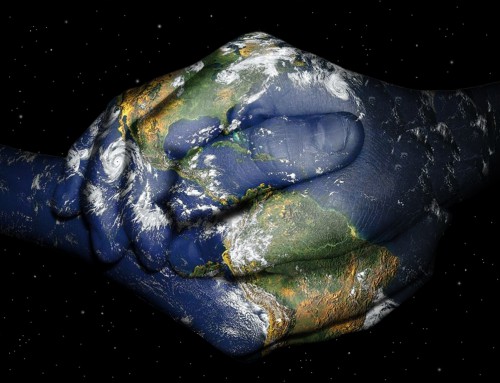Global Tourism Industry
A COURSE TOWARDS THE CHANGE
Chapter 3
The global tourism industry is growing rapidly and, as it is evolving, it is facing new challenges that are influencing the sector. In this topic we highlight the most important factors that are going to play a significant role in the evolution of the industry and will have implications in the decisions of policy makers, institutions and corporations when choosing their goals, deciding about their long term policy and developing their short and long term business and marketing plans to handle business challenges on a national and international level. This article is an effort to connect different aspects related to the global tourism industry using information and opinions from different and reliable sources, aiming at the creation of a solid base to re-think tourism global policy, future actions and business proposals.
The Global Tourism Industry article will be presented in 4 differently connected chapters reaching different aspects of the issue, that as a whole are composE the long INDUSTRY’S COURSE TOWARDS A CHANGE.
This is the third chapter :Mass Tourism Model Is about To Reach its Life Cycle Peak
Chapter 3 :Mass Tourism Model Is about To Reach its Life Cycle Peak
The mass industrialized tourism model is going to attract more and more people in the forthcoming years generating high revenues and profits. In many countries and regions of the world tourism is now the primary source of foreign exchange, employment and cash.
Although the benefits from the dominating mass tourism model have an enormous impact on national economies, many complications are putting the existing model in serious dispute. The existing model of tourism development is facing many challenges as it is already reaching its life cycle peak while at the same time giving rise to numerous financial, social and environmental questions in the involved countries around the world. The tourism industry is following the same industrial model developed for cars, houses and consumer goods. The life cycle of the tourism industry is also following exactly the same pattern as other sectors albeit in a different form. International tourism has exploded in size since the 1950s which has led these sectors to economic and social impasses with severe social implications.
Additionally the changing global economic environment and the transfer of the “production machine” from the US and Europe to Asian countries is radically changing the income status among citizens in the three continents given the higher purchasing power in the Asian countries. At the same time the middle class is increasing in the East while it is decreasing in many countries in the Western world. As a result of this it is very obvious that, in the next 20 years or so, outbound tourism from Asian nations will explode.
Taking into account the above described situation ,the challenge turns out to be far more complex than merely the prospect of run-away volume growth on a finite planet. Many sectors are running themselves into the ground financially as margins dwindle to razor thin. Meanwhile, thanks to congestion or overuse of scarce water and land resources, many destinations are destroying the landscapes and attractions, both natural and cultural, on which they depend.
The rapid growth of tourism has increased economic, environmental and social effects. Recently the attention has concentrated on the economic impacts and not on the environmental and social consequences of tourism. Tourism research has been reoriented after the acknowledgment of the size of the impacts of modern tourism. Moreover, the costs and negative impacts have been examined in a critical way. Tourism, both international and domestic, brings consequences and has an impact on tourist destinations. To discuss the positive and negative impacts of tourism it is necessary to include the visitor’s experience and to pay attention to the relationship between visitor and resources.
The impact made by tourism depends upon the volume and characteristics of the tourists (length of stay, activity, mode of transport, travel arrangement, etc.). A selection of variables must also be taken into account in the determination of any impact of tourism as well as their interrelationships and the ways in which they influence the nature, direction and magnitude of tourist impacts. The assessment of impacts should include all phases of the travel experience, including initial preparations, the journeys to and from the destination, the stay, etc.
Dr.Taleb Rifai secretary general of the UNWTO said in 2013:
“We expect a staggering 1.8 billion international tourists by 2030. Never before have so many people travelled to so many places. Few places on the planet have escaped the curiosity of the traveler and few are now unreachable.
These tourists generate over US$ 1 trillion in exports for the countries they visits, close to 6% of the world’s exports of goods and services, and 30% of exports if we consider services alone. One in every 12 jobs worldwide is connected to the tourism sector. Here in Spain, tourism accounts for some US$ 60 billion in exports. Spain is in fact the second highest earner of tourism dollars in the world after the United States. Europe as a whole is the most visited region in the world, with over 500 million international tourists a year.
These are big numbers, but it is the impact of tourism on the ground that is far more relevant. Tourism means jobs, business opportunities for small and medium enterprises, the renewal of urban and rural areas and, if properly managed, the preservation and promotion of a country’s natural and cultural heritage.
The global picture naturally hides important heterogeneities among countries. The sector’s direct contribution to GDP, employment, income and foreign exchange earnings is greatest in developing countries that are largely dependent on tourism, such as many small island developing states. In absolute terms, however, the economic impact of tourism is most significant in large and diversified economies such as the United States of America, China, Japan, France, Brazil, Spain and Italy. UNWTO estimates that “in advanced, diversified economies, the contribution of tourism to GDP ranges from approximately 2 per cent for countries where tourism is a comparatively small sector, to over 10 per cent where tourism is an important pillar of the economy”.
According to the UNEP study: ”There are many hidden costs to tourism, which can have unfavorable economic effects on the host community. Often rich countries are better able to profit from tourism than poor ones. Whereas the least developed countries have the most urgent need for income, employment and general rise of the standard of living by means of tourism, they are least able to realize these benefits. Among the reasons for this are large-scale transfer of tourism revenues out of the host country and exclusion of local businesses and products.”
The Leakage Problem
The other problem is “leakage”: there is much money flow, but ultimately how much the host societies really benefit in this globalized system. The rise of the internationalized market economy establishes an informal economy, parallel or underground, essential to survive in the context of
social exclusion, where “private affluence goes side by side with the public squalor”. This evolution led to the deterioration of subsistence production, the foundations of local life, the links and the social fabric with a more or less heavy impact on families and social relationships. There are effects on land values between overvaluation and speculation. The logic of the economy in particular leads to the exclusion of uses considered less profitable (like fishing, gardening, agriculture). Tourism has precipitated the breakdown of fragile local economies, inflation and exclusion.
The direct income for an area is the amount of tourist expenditure that remains locally after taxes, profits, and wages are paid outside the area and after imports are purchased; these subtracted amounts are called leakage. In most all-inclusive package tours, about 80% of travelers’ expenditures go to the airlines, hotels and other international companies (who often have their headquarters in the travelers’ home countries), and not to local businesses or workers. In addition, significant amounts of income actually retained at destination level can leave again through leakage.
Of each US$ 100 spent on a vacation tour by a tourist from a developed country, only around US$ 5 actually stays in a developing-country destination’s economy. A study of tourism ‘leakage’ in Thailand estimated that 70% of all money spent by tourists ended up leaving Thailand (via foreign-owned tour operators, airlines, hotels, imported drinks and food, etc.). Estimates for other Third World countries range from 80% in the Caribbean to 40% in India.
Import Leakage
This commonly occurs when tourists demand standards of equipment, food, and other products that the host country cannot supply. Especially in less-developed countries, food and drinks must often be imported, since local products are not up to the hotel’s (i.e. tourist’s) standards or the country simply doesn’t have a supplying industry. Much of the income from tourism expenditures leaves the country again to pay for these imports.
The average import-related leakage for most developing countries today is between 40% and 50% of gross tourism earnings for small economies and between 10% and 20% for most advanced and diversified economies, according to UNCTAD.
Even in developed regions, local producers are often unable to supply the tourism industry appropriately even if good will is present: the 64-room hotel “Kaiser im Tirol” in Austria, an award-winning leader in sustainable practices, cannot find organic food suppliers in the local farming networks in the appropriate quantity, quality and reliability, as production cycles and processes are not compatible with its needs.
Export Leakage
Multinational corporations and large foreign businesses have a substantial share in the import leakage. Often, especially in poor developing destinations, they are the only ones that possess the necessary capital to invest in the construction of tourism infrastructure and facilities. As a consequence of this, an export leakage arises when overseas investors who finance the resorts and hotels take their profits back to their country of origin.
A 1996 UN report evaluating the contribution of tourism to national income, gross levels of income or gross foreign exchange, found that net earnings of tourism, after deductions were made for all necessary foreign exchange expenditures, were much more significant for the industry. This report found significant leakage associated with: (a) imports of materials and equipment for construction; (b) imports of consumer goods, particularly food and drinks; (c) repatriation of profits earned by foreign investors; (d) overseas promotional expenditures and (e) amortization of external debt incurred in the development of hotels and resorts. The impact of the leakage varied greatly across countries, depending on the structure of the economy and the tourism industry. From the data presented in this study on the Caribbean, St. Lucia had a foreign exchange leakage rate of 56% from its gross tourism receipts, Aruba had 41%, Antigua and Barbuda 25% and Jamaica 40%.
Enclave Tourism
Local businesses often see their chances to earn income from tourists severely reduced by the creation of “all-inclusive” vacation packages. When tourists remain for their entire stay at the same cruise ship or resort which provides everything they need and where they will make all their expenditures, not much opportunity is left for local people to profit from tourism. In most of the cases this happens due to the lack of national policy by the local political and business authorities.
The Organization of American States (OAS) carried out a survey of Jamaica’s tourist industry that looked at the role of the all-inclusive compared to other types of accommodation. It found that ‘All-inclusive hotels generate the largest amount of revenue but their impact on the economy is smaller per dollar of revenue than other accommodation subsectors.’
It also concluded that all-inclusive imported more, and employed fewer people per dollar of revenue than other hotels. This information confirms the concern of those who have argued that all-inclusive have a smaller trickle-down effect on local economies.
The cruise ship industry provides another example of economic enclave tourism. Non-river cruises carried some 8.7 million international passengers in 1999. On many ships, especially in the Caribbean (the world’s most popular cruise destination with 44.5% of cruise passengers), guests are encouraged to spend most of their time and money on board, and opportunities to spend in some ports are closely managed and restricted.
Other negative impacts:
Infrastructure Cost
Tourism development can cost the local government and local taxpayers a great deal of money. Developers may want the government to improve the airport, roads and other infrastructure, and possibly to provide tax breaks and other financial advantages, which are costly activities for the government. Public resources spent on subsidized infrastructure or tax breaks may reduce government investment in other critical areas such as education and health.
Increase in Prices
Increasing demand for basic services and goods from tourists will often cause price hikes that negatively affect local residents whose income does not increase proportionately. A San
Francisco State University study of Belize found that, as a consequence of tourism development, the prices for locals increased by 8%.
Tourism development and the related rise in real estate demand may dramatically increase building costs and land values. Not only does this make it more difficult for local people, especially in developing countries, to meet their basic daily needs, it can also result in a dominance by outsiders in land markets and in-migration that erodes economic opportunities for the locals, eventually disempowering residents.
In Costa Rica, close to 65% of the hotels belong to foreigners. Long-term tourists living in second homes, and the so-called amenity migrants (wealthy or retired people and liberal professionals moving to attractive destinations in order to enjoy the atmosphere and peaceful rhythms of life) cause price hikes in their new homes if their numbers attain a certain critical mass.
Economic Dependence of the Local Community on Tourism
Diversification in an economy is a sign of health, however if a country or region becomes dependent for its economic survival upon one industry, it can put major stress upon this industry as well as the people involved to perform well. Many countries, especially developing countries with little ability to explore other resources, have embraced tourism as a way to boost the economy.
In The Gambia, for instance, 30% of the workforce depends directly or indirectly on tourism. In small island developing states, percentages can range from 83% in the Maldives to 21% in the Seychelles and 34% in Jamaica, according to the WTO. Over-reliance on tourism, especially mass tourism, carries significant risks to tourism-dependent economies. Economic recession and the impacts of natural disasters such as tropical storms and cyclones as well as changing tourism patterns can have a devastating effect on the local tourism sector.
Malta has only 380,000 residents, but received 1.2 million tourists in 1999. As 25% of its GDP (and indirectly 40%), tourism generated more than $650 million in foreign exchange earnings. Malta’s high dependence on tourism and a limited number of export products makes its trade performance vulnerable to shifts in international demand.
Seasonal Character of Jobs
The seasonal character of the tourism industry creates economic problems for destinations that are heavily dependent on it. Problems that seasonal workers face include job (and therefore income) insecurity, usually with no guarantee of employment from one season to the next, difficulties in getting training, employment-related medical benefits, and recognition of their experience, and unsatisfactory housing and working conditions.
Other Industry Impacts Affecting Tourism
Economic crises, like the Asian crisis that hit Thailand, Malaysia and Indonesia a few years ago, can be devastating to inbound tourism flows. The financial turmoil triggered a sharp fall in tourism flows to affected countries during 1997 and 1998. In the Philippines, the crisis and the temporary closure of Philippine Airlines affected inbound arrivals significantly as there was a decline of almost 3.3% in 1998.
In the case of Spain, what needs to be fixed in the tourism sector? According to Escarrer, the problems are quite widespread. “We need a public-private partnership and, in addition, decentralization of the sorts of skills related to tourism.” Currently, those skills are in the hands of the “autonomous communities” — the territorial divisions into which Spain is divided — and that presents an additional problem. “The funding available for helping us is not a negligible amount, but what we have asked from Executor [an organization headed by Escarrer, which brings together 26 big companies in the sector] isn’t money but leadership and coordination among the various ministries, and between the central government and the ‘autonomous communities,’” he added.
Vázquez argued that excess infrastructure is another problem worth addressing. “We have gotten loans and money too easily, and now we have more kilometers of railroad lines and airports than many countries in the world, but we need a lot of money to maintain them. The authorities know that the problem exists but the question is how to solve it.” Unfortunately in Spain, he added, “there isn’t any concentration of responsibility in the tourism sector, since it is divided into various portfolios,” including the ministries of industry, development and environment.
In conclusion, the numerous problems that the industry is facing are not going to stop the mass tourism phenomenon around the globe. What is going to happen is that policy makers will be forced by hard facts to sooner or later apply rules that will gradually minimize the negative impact of tourism on the economic, social and environmental plane of different destinations. It is very important to understand that mass tourism is not against sustainable tourism but is the next new normal path for the industry inside a global society. The industry has been facing many problems for many years due to the rapid development and interactions between many different factors that are interconnected and have not been controlled effectively to the present day, on both a global as well as national level.
In order to reach useful conclusions it is of great interest to examine specific cases of negative impacts not only caused by mass tourism’s rapid growth but also because of false unsustainable policies and to specifically look into the ways that different societies face the problem. Studying the following cases are very useful in order to understand in depth the whole issue:
- Towards a new local sustainable development model for a consolidated tourist destination: The Case of Los Cabos,Mexico
- Impacts of controlled tourism policy:The Bhutan Case
- Creative Economy,tourism & Industry Development in South Korea
- Can Tourism Destroy Local Culture.The Barcelona Case
- Alternative & Mass Tourism Combination Analysis.The Case Of South Europe
Read More At: Towards A New Sustainable Tourism Model…….shortly
References:
- The Guardian: Six reasons why mass tourism is unsustainable
- Pew Research Center: Emerging and Developing Economies Much More Optimistic than Rich Countries about the Future.
- Butler, R.W., The tourist are life cycle in the twenty first century (Chapter 3). A Companion to Tourism, ed. A. Lew, Blackwell: Oxford.
- Pew Research Center: Views on National Economies Mixed as Many Countries Continue to Struggle, August 9 2016.
- Journal of travel research: Estimating the Multiplier Effects of Tourism Expenditures on a Local Economy through a Regional Input-Output Model.
- United Nations Environment Program : Negative Economic Impacts of Tourism.
- IVANOVA, M.N. (2011). Consumerism and the Crisis: Wither “the American Dream”? Critical Sociology.
- HIGGINS-DESBIOLLES, F. (2010). The Elusiveness of Sustainability in Tourism: The Culture-ideology of Consumerism and its Implications. Tourism and Hospitality Research.
- Etudes Caribeennes : Mass Tourism vs Alternative Tourism? Challenges and New Positionings
- Etudes Caribeennes :Stereotypes and Professional Reflections on Mass Tourism: Focusing on Tour Operators, Mass Tourism Destinations and Mass Tourists
- Mail Online : Mass tourism is ruining Barcelona and turning it into a ‘theme park’, claims controversial new documentary
- Interdependent: The death of Venice: Corrupt officials, mass tourism and soaring property prices have stifled life in the city
- Los Cabos Mexico:Towards a new local sustainable development model for a consolidated tourist destination: The Case of Los Cabos,Mexico
- Impacts of controlled tourism policy:The Bhutan Case
- Creative Economy,tourism & Industry Development in South Korea
- Can Tourism Destroy Local Culture.The Barcelona Case
- Alternative & Mass Tourism Combination Analysis.The Case Of South Europe
Read Chapter 2: Globalization’s Impact On Tourism







Leave A Comment